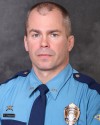The
latest news out of Raleigh has all the makings of a Hollywood comedy. Well, maybe not a Christmas release at a
theater near you, but definitely a made for TV movie. I can even see the potential for a catchy
tune that people around the world could lip-sync to on YouTube. We can
take possums in so many directions.
 |
| grinnus alottus |
We
southerners love the ole possum. He
takes us back to our rural roots, waddling about with a perpetual smile that
hints that a tree filled with plump persimmons is just around the corner. True or not, we all grew up hearing the older
folks talk about eating possums during the hard times. I recall an instructor in my wildlife officer
recruit class asking if any of us had ever broken the game laws. Most of us reluctantly raised our hands. He then asked how many had gotten caught. One recruit raised his hand and admitted to
being charged with hunting possums in the closed season. He had instant credibility with the rest of
the class.
 |
| www.clayscorner.com |
I
wrote in an earlier post
about PETA’s attempt to alter the New Year's Eve festivities in the southern Appalachian
community of Brasstown. NC. A thing I love
about mountain people is that they don’t like to be pushed around – I guess it
is a carryover from our Scots/Irish roots.
So, in 2013 a mountain legislator introduced, and the General Assembly
passed, the Opossum
Right-to-Work Act (even Hollywood couldn’t make that up) to give the North Carolina
Wildlife Resources Commission (NCWRC) the authority to issue a captivity
license for the Clays Corner Possum
Drop. That will show PETA.
Then
PETA decided to push back (again) and officials from the NCWRC have spent an exorbitant
amount of time defending their legal issuance of that license. NCWRC staff from across the state have
been repeatedly subpoenaed to court. Countless
conservation dollars have been wasted in an attempt to appease a small number
of people who are opposed by an equally small number of people. Maybe it is time to call a truce.
Truce??? No way.
Another thing I love about my people is that we will fight even if we
know we will lose. We ain’t scared of an
ass whoopin.
So,
let’s introduce another bill. And this time, let’s get the NCWRC off the
hook. Let’s make Clay County exempt from
the NCWRC’s opossum regulations for a week in late December to early
January. That will allow someone to
catch a possum, hold it in captivity for that week, display it at the Possum Drop
and then turn it loose before the week is up.
Oh yeah, we are winning now.
This
news comes as North Carolina educators continue to offer complaints about teacher
pay (among the lowest in the country) and as legislators introduce a
bill that will make it illegal to reveal the chemicals used in fracking. It causes one to wonder about our legislative
priorities and how North Carolinians are viewed by others.
The
scary thing is that there are always unintended consequences to legislation. It is the whole "slippery slope" metaphor being played out in slow motion as our comedy takes a tragic turn. If I only learned one thing from 29 years in
the law enforcement profession, you can never “law” your way out of a
problem. Laws are part of the solution,
but will rarely take us all the way to our desired outcome. This is a another example of applying a technical fix (a law) to an adaptive problem (societal shifts).
It
all strikes me as childish and downright embarrassing. The social climate changes and just because
it was acceptable fun to revel in the possum on New Year’s Eve for many years doesn’t mean
we should continue. On the other hand, it
is one possum for one night - a family event – where is the harm? We are now in an age where compromise is
viewed as weak. “We have to stand for
something or we will fall for anything” or something like that. I'm all for taking a stand, but with all the issues that desperately need to be addressed, I'm certain that that stand shouldn't be over a possum.
As
for that possum smile. I’ve now come to
view it as a knowing smirk.


















